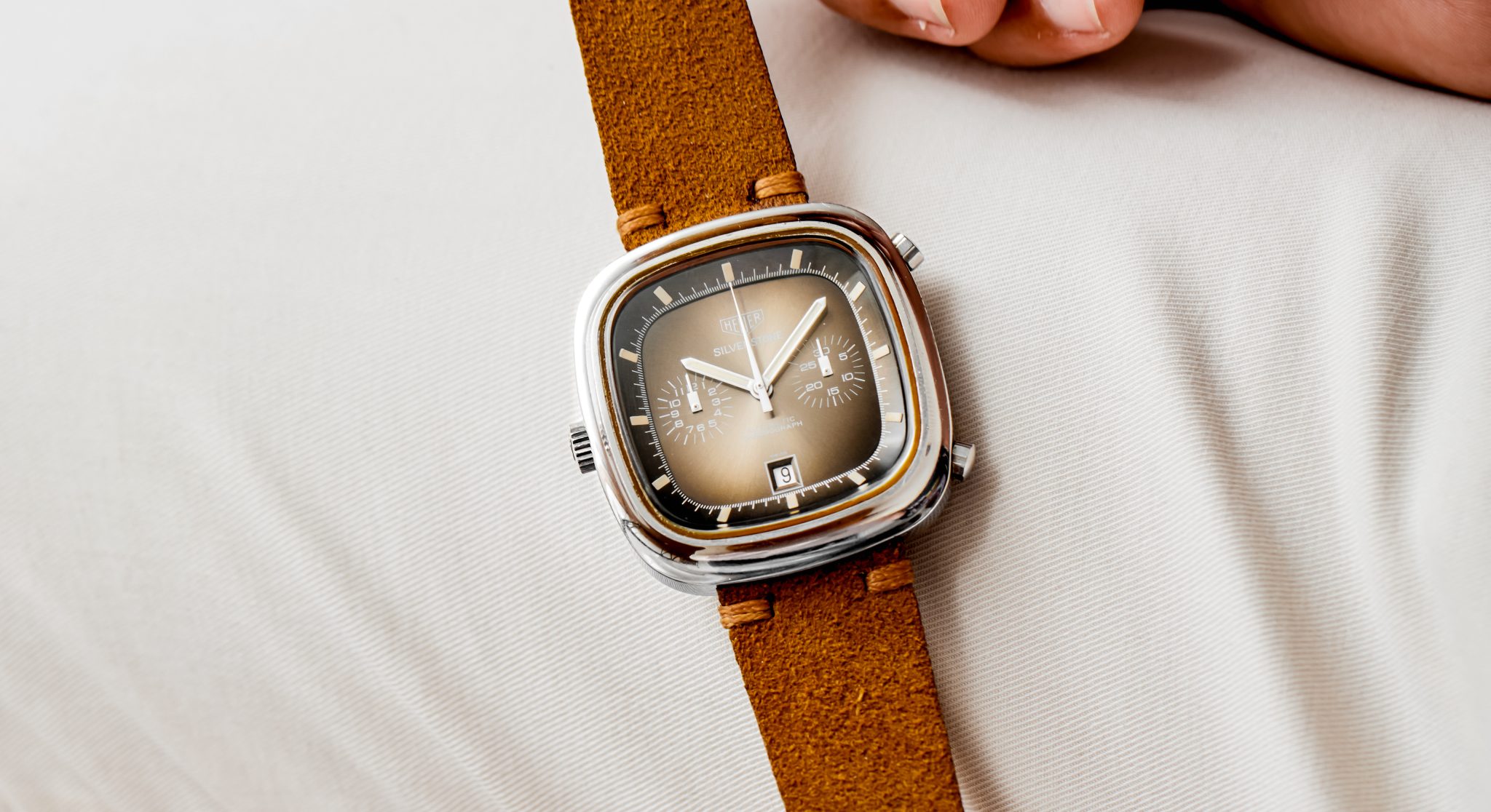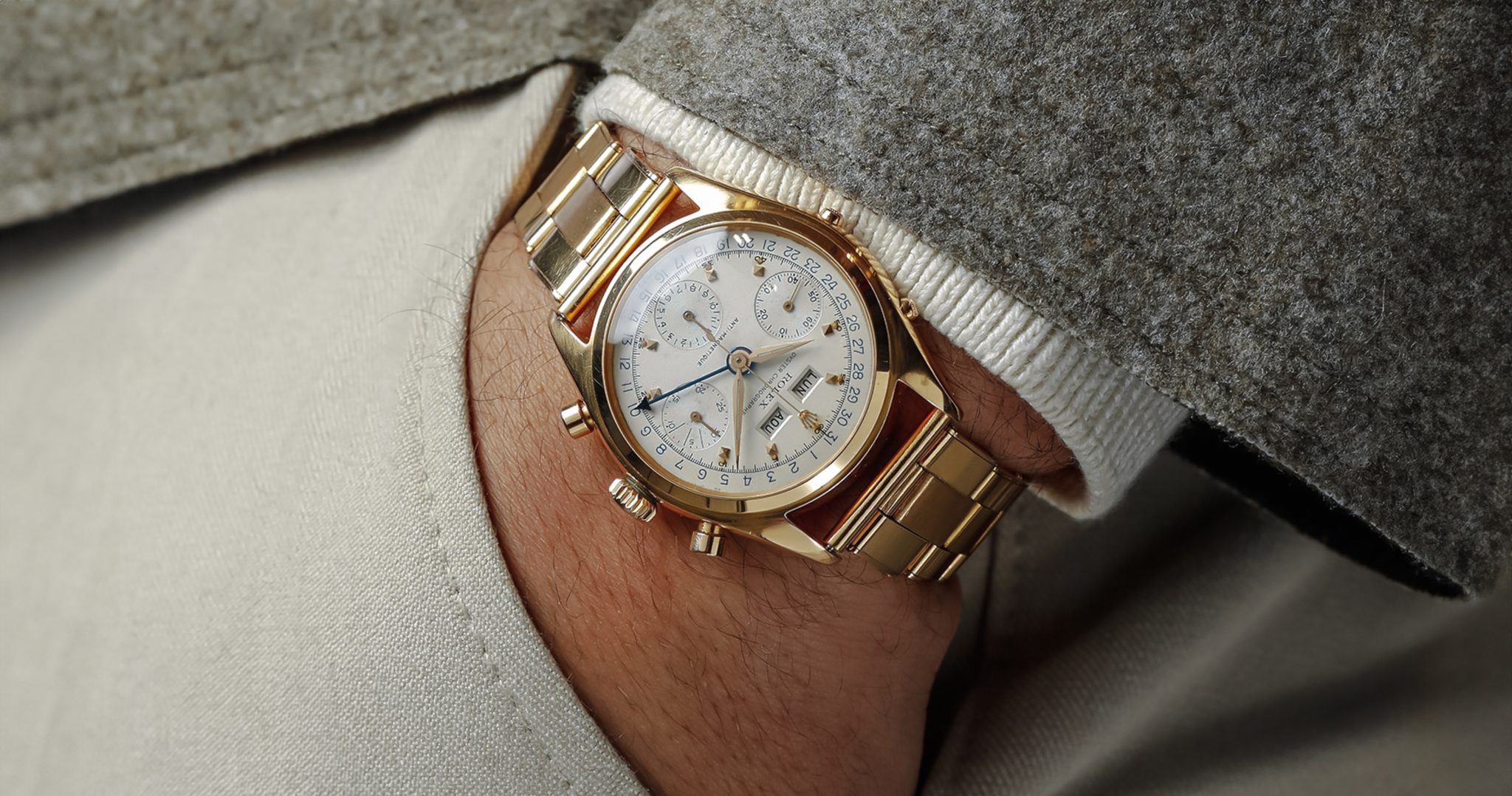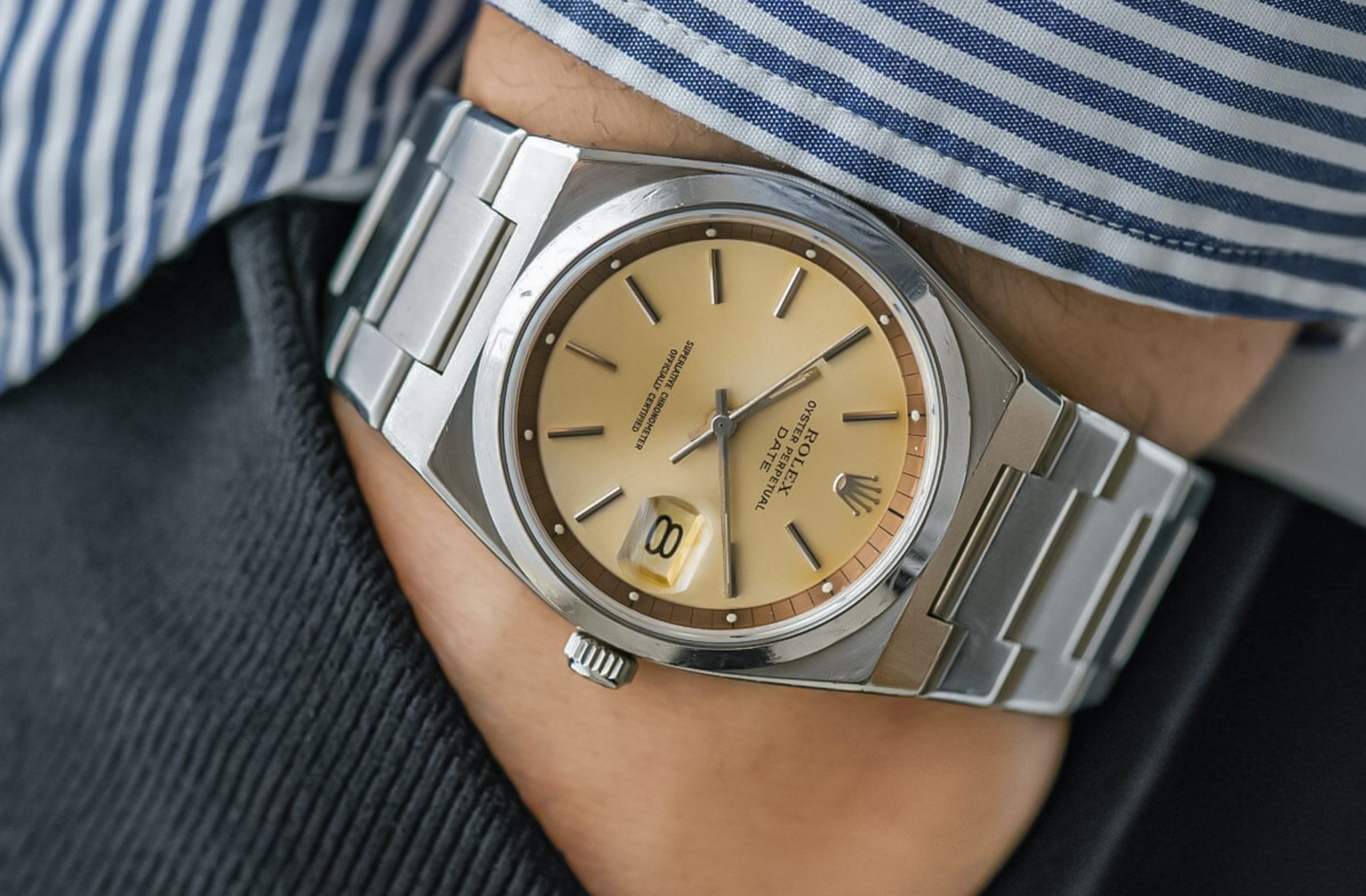
1530 Rolex Oyster Perpetual Date
Rolex’s ref. 1530 is pure ‘I Can’t Believe It’s Not Oysterquartz!®’ with a mechanical—and often tropical—edge. Because it was produced in relatively tiny numbers, just ~1500 examples, anyone who knows anything about watches is going to be expecting its seconds hand to be ticking when they see the case shape. Then they get close and, if they’re observant, will have a minor crisis. The 1530 confounds expectation, and that’s always a satisfying trick. The reference is not on John Mayers wrist, Hodinkee haven’t done a reference points covering it, and its story is one which requires a deep understanding of Rolex. If you’ve always lusted after the harshly angular, integrated Oysterquartz case but prefer mechanical movements, there is an answer to your prayers.
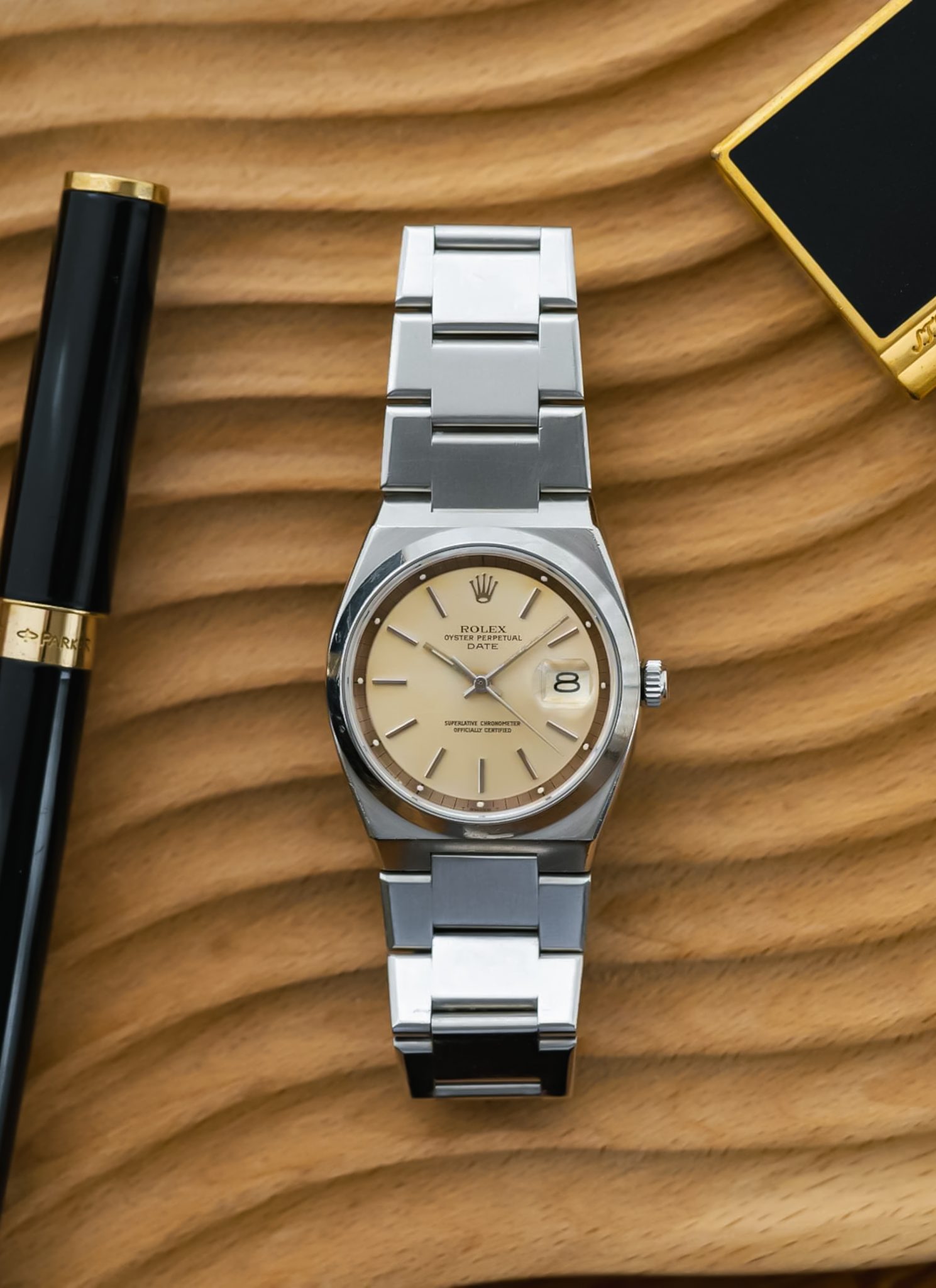
This misstep, if you can call it that, was a result of Rolex’s most uncertain era. To face the quartz crisis head-on, Rolex had decided in 1972 to develop their own revolutionary calibre and not rely on the Beta 21. That monumental project, the Oysterquartz, took a humbling, unexpectedly lengthy, and expensive five years. However, a few years into the project, Rolex had already designed and produced the perfect case for this groundbreaking calibre.
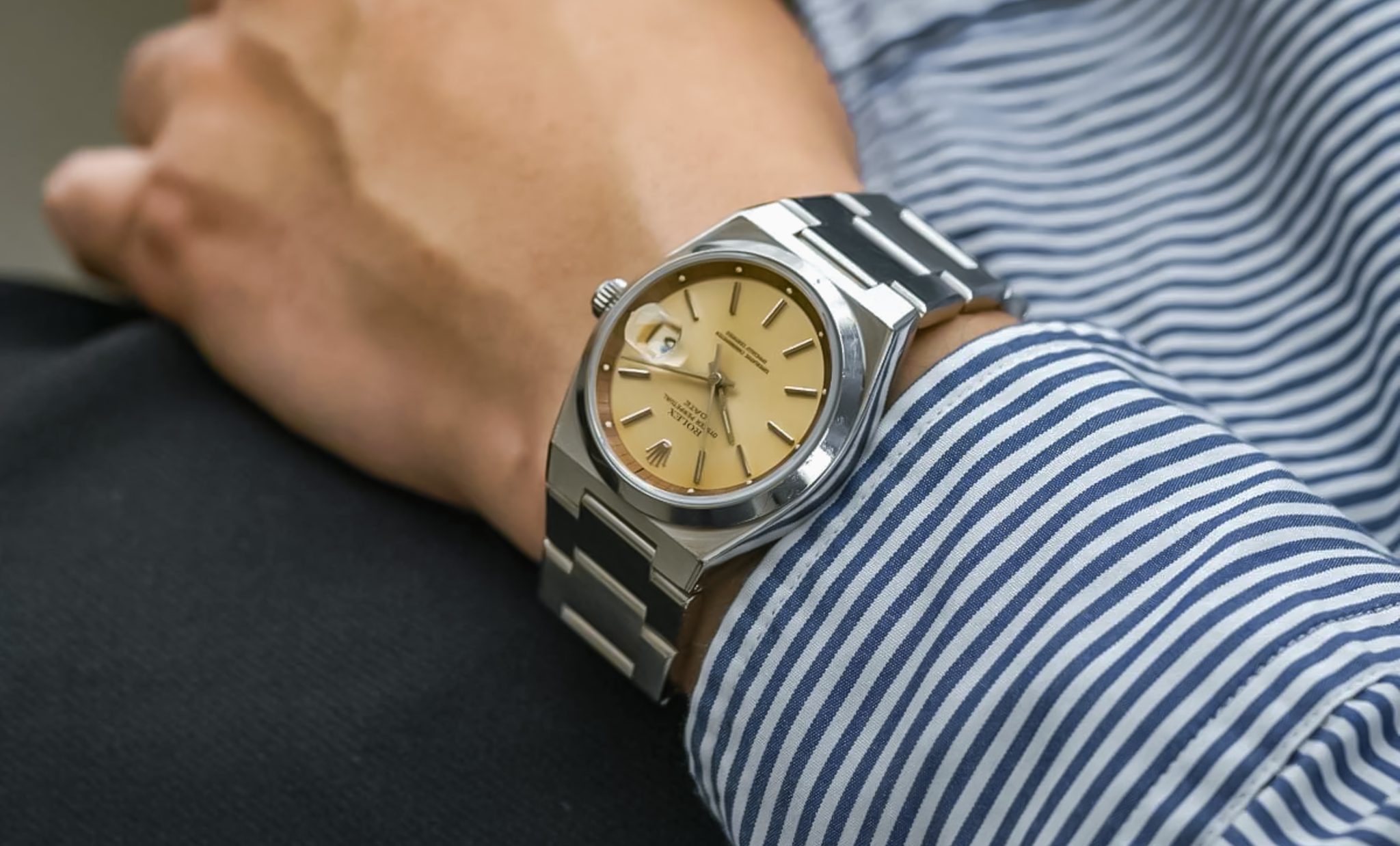
Instead of simply waiting for the Oysterquartz to be finished at some uncertain time, Rolex decided to combine this new angular 36mm steel case with their dependable calibre 1570 for the interim. The result was this, the short-lived 1530; an Oysterquartz case with an automatic calibre. Its run lasted from just 1975 until 1977, making it one of the shortest runs ever by some margin. Moreover, these dials vary from the 17000 Oysterquartz considerably. Both in their steeply inclined minute track and dial finish. Many of the 1530’s dials had a tendency to turn a light yellow over time. Where this isn’t quite a panna or cream dial, I think lemon may be an appropriate adjective. Characterful patina, robust story, integrated cases, mechanical watchmaking, and all still relatively unsung. This is the kind of thing we’re all here for, or at least I am.
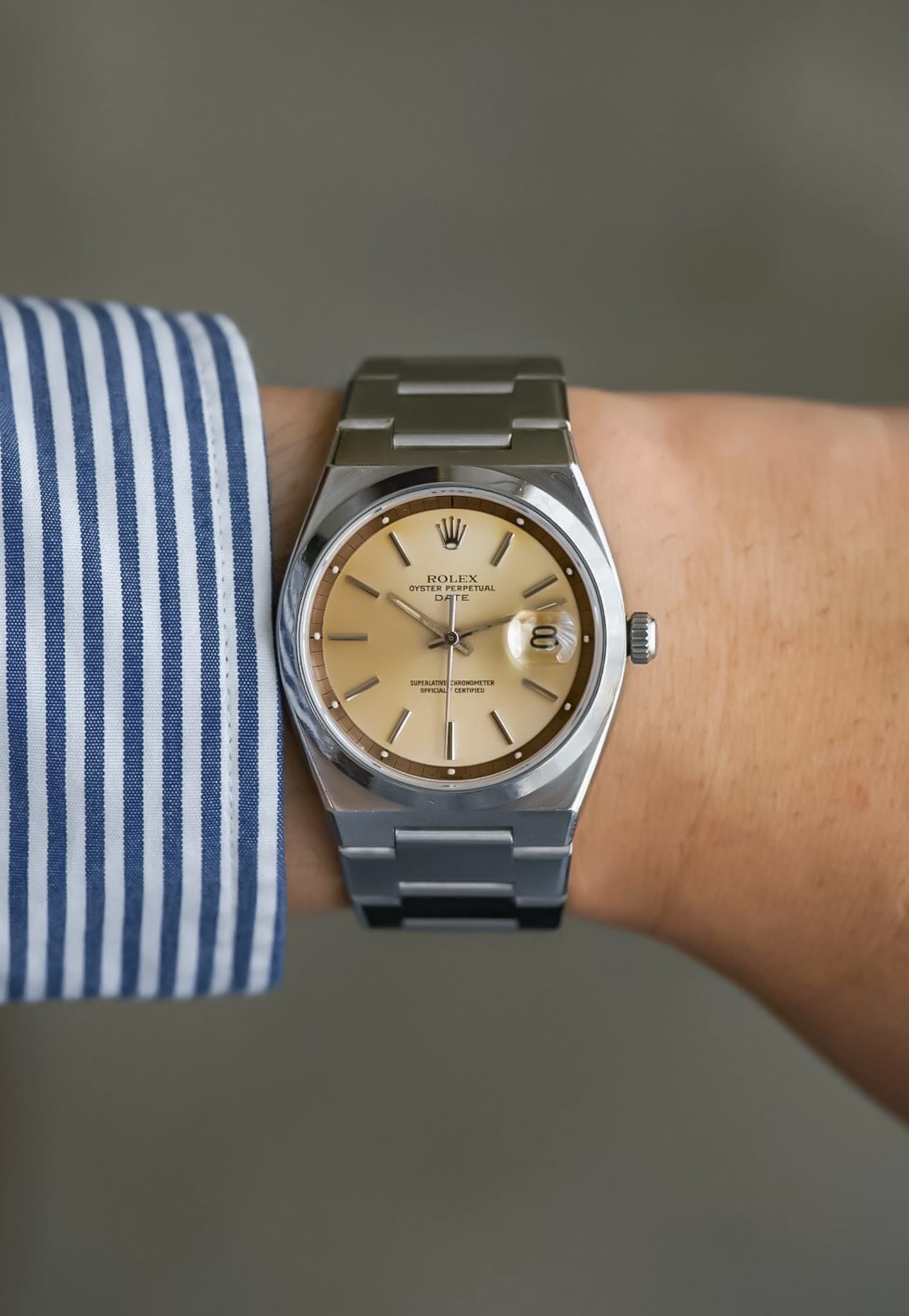
Even better, their dials often show age in interesting ways. Most commonly, we see them turn from silver into a lemony citrusy yellow. This example is more on the taupe side than what I’m used to seeing, particularly on its angled seconds track/rehaut which is almost copper. I’m not sure if the term tropical is correct, perhaps citrus instead? Either way, it’s a great look and great, highly nuanced Rolex reference. Long live the Oysterq… erm, I mean 1530.
Moreover, the case here is great too. This was one of the earliest Rolex references to sport sapphire, and as a result very little in the way of scratches. The dial’s tone is very interesting, I haven’t seen another quite like it, particularly with its rehaut. It comes from a well-regarded Japanese retailer.










